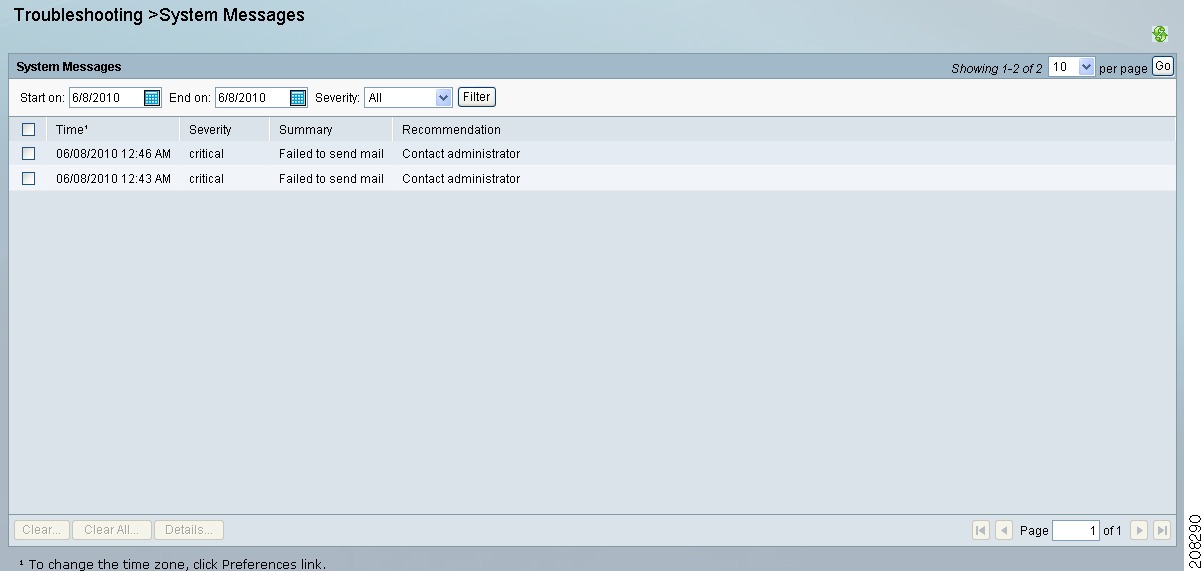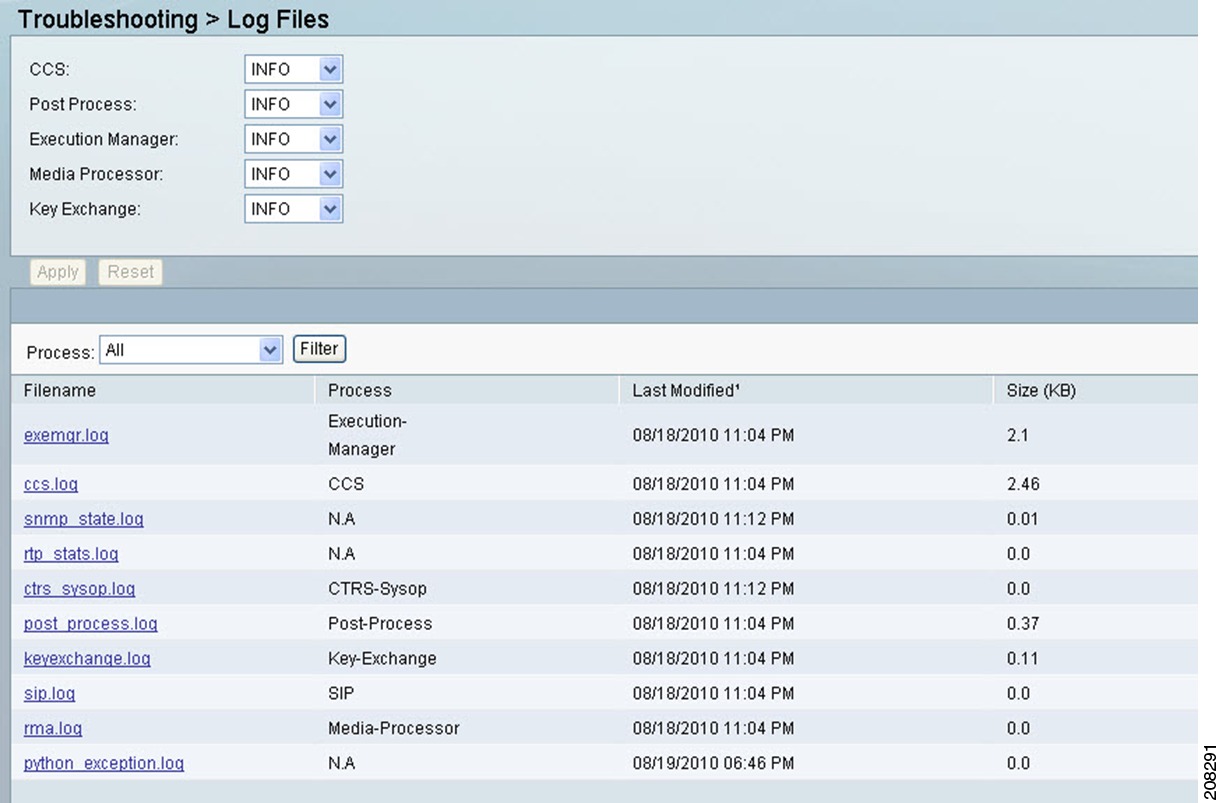

Table Of Contents
CTRS Alarms and System Errors Messages
Troubleshooting CTRS
September 2010The following sections describe the Troubleshooting tools for the Cisco TelePresence Recording Server (CTRS):
•
CTRS Alarms and System Errors Messages
System Information
Click System Information in the left navigation to view information about the CTRS (see Figure 6-1). The information displayed under System Information is configured during CTRS software installation.
Figure 6-1 Troubleshooting > System Information
•
SKU
•
Hostname: Hostname of the CTRS.
•
IP Address and subnet mask: IP address and corresponding subnet mask of the Cisco TelePresence Recording Server.
•
MAC Address: MAC address of the Cisco MCS 7800 Series Media Convergence Server on which the Cisco TelePresence Recording Server is running
•
Hardware Model: Model number of the Cisco MCS 7800 Series Media Convergence Server on which the Cisco TelePresence Recording server is running.
•
Software Version: Version of CTRS Administration software currently installed.
•
Operating System (OS) Version
•
Kernel Version
CTRS Alarms and System Errors Messages
You can view CTRS system messages in one of two ways:
•
Click System Messages in the left navigation (see Figure 6-2). The System Messages page displays a list of messages.
Figure 6-2 Troubleshooting > System Messages
•
From System Status at the bottom of the left navigation, click the icon for Warnings or Errors.
The following table provides field descriptions for all system error and warning displays:
•
To delete one of the system error messages, click the radio button to the left of the table entry, and then click Clear.
•
To delete all error messages displayed, click Clear All.
Log Files
Click Log Files in the left menu to display or modify log information (see Figure 6-3).
Figure 6-3 Troubleshooting > Log Files
Use the Log File page to set severity levels for alarms associated with specific system processes, to filter log files displayed, and to download log files.
Configuring the Severity Level of System Error Messages
To configure the severity level of system level error messages and alarms for specific process areas:
Step 1
Click Log Files under Troubleshooting in the left menu to access the Log Files page.
Step 2
At the top of the Log Files page, there is a table listing the following CTRS system processes:
•
CCS
•
Post Processor
•
Execution Manager
•
Media Processor
•
Key Exchange
To the right of each process is a drop-down menu with these severity levels:
•
CRIT
•
DEBUG
•
ERROR
•
INFO
•
OFF
•
WARN
Click the down arrow to display the defined levels of severity. Choose the level at which logs are captured.
Note
Log levels create varying amounts of data; for example, DEBUG creates more log entries than CRIT. Because verbose logs can impact system performance, use verbose logs only to track a problem.
Filtering the Log File Table Listings
To filter the log files displayed in the Log File Table:
Step 1
Click Log Files under Troubleshooting in the left menu to access the Log Files page.
Step 2
Click the down arrow to the right of Processes to display a list of CTRS processes. Click a specific process on which to filter log files. Choices are the following:
•
All
•
CCS
•
Execution Manager
•
Media Processor
•
Post Process
•
Key Exchange
•
SIP
•
Web-UI
•
CDR Logs
•
Core
•
Alarm Logs
•
CTRS Sysop
Step 3
Click the Filter button to display the logs files associated with the chosen process.
Downloading Log Files
To download log files from the Log File table:
Step 1
Click Log Files under Troubleshooting in the left navigation.
Step 2
At the bottom of the Log Files page is the Log File list. The table is organized as described in Table 6-2.
Step 3
Click the filename of a log file to download that file. Click the Download All button to download all log files listed.

 Feedback
Feedback



